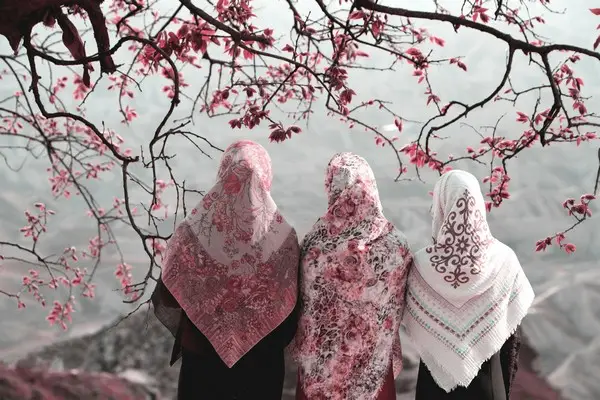Table of Contents
- Historical Origins
- Religious Foundations
- Social Implications
- Variations Across Cultures
- Contemporary Debates
- Legal and Policy Perspectives
- Sociological Perspectives
- Conclusion
Purdah, a practice most commonly associated with Muslim communities in South Asia, refers to the seclusion of women from public observation by means of physical segregation and the wearing of concealing clothing. This cultural and religious practice has deep historical roots and varying manifestations across different regions and communities. Understanding purdah requires an exploration of its historical origins, religious foundations, social implications, and the contemporary debates surrounding its practice.
Historical Origins
The origins of purdah can be traced back to ancient civilizations, including the Byzantine and Persian Empires, where the seclusion of women was a marker of status and privilege. However, its more recognized form today is largely associated with Islamic culture and the spread of Islam. During the early Islamic period, practices of modesty and segregation were emphasized, although the exact nature and extent of these practices varied widely. As Islam expanded, these customs were adapted and integrated into the local traditions of the regions it reached, leading to diverse practices of purdah.
In South Asia, the practice was further influenced by indigenous customs and the arrival of Islamic rulers. The Mughal Empire, for instance, reinforced the practice among the upper classes as a symbol of prestige and honor. Over time, purdah became entrenched in the socio-cultural fabric of the region, impacting women’s lives in multifaceted ways.
Religious Foundations
Purdah has its religious foundations in the Quran and Hadith, the primary sources of Islamic law and guidance. The Quran emphasizes modesty for both men and women, and several verses specifically address the conduct and dress of women. For instance, Surah An-Nur (24:31) advises believing women to draw their veils over their bosoms and not display their beauty except to their immediate family members.
The Hadith literature, which records the sayings and actions of the Prophet Muhammad, further elaborates on these principles. Various Hadiths discuss the importance of modesty and provide guidelines for behavior in public and private spaces. However, the interpretation and implementation of these texts have varied significantly across different Islamic communities, leading to diverse practices of purdah.
Social Implications
The practice of purdah has profound social implications, particularly concerning gender relations and the status of women in society. On one hand, purdah can be seen as a means of protecting women and preserving their modesty in accordance with religious beliefs. It provides a framework within which women can interact with the public sphere while maintaining their privacy and dignity.
On the other hand, purdah has been critiqued for reinforcing gender inequality and restricting women’s freedom and opportunities. The physical segregation of women often limits their access to education, employment, and social participation, thereby perpetuating patriarchal structures. In many communities, the practice is enforced through social pressure and cultural norms, making it difficult for women to challenge or opt out of it.
Variations Across Cultures
Get the full article AD FREE. Join now for full access to all premium articles.
View Plans & Subscribe Already a member? Log in.





